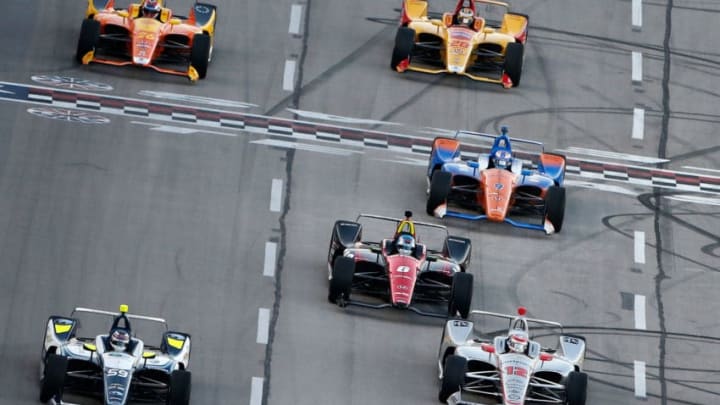
With four races remaining on the 2018 IndyCar schedule, how do the sport’s 20 full-time drivers stack up against one another?
Andretti Autosport’s Alexander Rossi dominated the Honda Indy 200 at Mid-Ohio Sports Car Course en route to taking his second victory of the 2018 IndyCar season, as he also won the Toyota Grand Prix of Long Beach on the streets of Long Beach, California back in mid-April.
By winning the 90-lap race 13-turn, 2.258-mile (3.634-kilometer) Mid-Ohio Sports Car Course in Lexington, Ohio in his #27 Honda, Rossi because the fourth driver to win multiple races this year.
Team Penske’s Josef Newgarden and Chip Ganassi Racing’s Scott Dixon have both earned three victories so far in 2018 in their #1 Chevrolet and #9 Honda, respectively, while Will Power has earned two in his #12 Chevrolet.
Three other drivers have won one race this season, meaning seven different drivers have won at least one of the season’s first 13 races. Honda drivers have won eight races, including five of the last six and the last three in a row, while Chevrolet drivers have won five.
Honda drivers have not won more races than Chevrolet drivers in a season since Chevrolet returned to IndyCar back in the 2012 season, but one more win by a Honda driver over the course of the season’s final four races will change that.
How did Rossi’s win and the rest of the action from Mid-Ohio Sports Car Course affect the IndyCar Driver Power Rankings? Here are the formulated IndyCar Driver Power Rankings and the non-formulated IndyCar Driver Power Rankings following the action from the 2.258-mile road course.
To see how the formulated IndyCar Driver Power Rankings are calculated, click here.
NOTE: Despite the fact that Gabby Chaves did not drive the #88 Harding Racing Chevrolet in the Honda Indy Toronto or the Honda Indy 200, he is still included in both sets of IndyCar Driver Power Rankings. This is the case because of the fact that he was not released by Harding Racing and is still technically considered a full-time driver.
